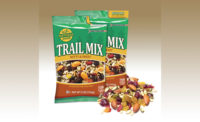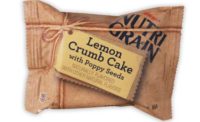
By Dan Malovany
Coming out of college, few graduates ever know exactly where their careers will take them. Take Matthew Reich, who graduated Summa Cum Laude from the University of Massachusetts. He started out his career doing corporate lending for four years, then moved into the publishing business and later founded the New Amsterdam Brewery, which was the first microbrewery on the East Coast in 1982. After selling the brewery, he served a stint at Terra Chips and eventually settled down as chief operating officer of Tom Cat Bakery in 1995.
Looking back on his career, he wouldn’t change a thing.
“I started my career at Citibank, and those who stayed in there made 10 times more money over the past 25 years, but I don’t know if they ever had as much fun,” says Reich, the bakery’s current president. “I got to drink beer, eat chips and make bread.”
Having a passion for the business is what makes a difference in life, he adds.
That’s a philosophy shared by James Rath, vice president of manufacturing and R&D, and a partner in Tom Cat Bakery. Rath graduated from SUNY Old Westbury and headed to California where he worked for aerospace giants Rockwell International and Hughes Aircraft.
While out West, he got interested in cooking, worked as a chef at a number of restaurants, returned to New York in 1985 and attended the French culinary Institute. After being inspired about baking as he trained at various restaurants throughout the city, he joined Tom Cat Bakery as a baker. After one week, he says, he found his love for life in a career that blends art with science in a way that fit his personality perfectly.
“It’s just so challenging, but more enjoyable than building rockets and missiles,” he says.
Actually, it doesn’t take a rocket scientist to make a great loaf of bread. Rather, Rath says, it just takes a time, patience and a whole lot more. Tom Cat Bakery, which produces 150 different bread varieties a day, relies on an assortment of wheat, rye and white liquid levain, as well as everything from biga, poolish and solid levain. Many of these starters require anywhere from six to eight hours to produce while doughs may require another two to four hours of fermentation time. In the end, Rath notes, it can take eight to 12 hours to produce many of these Old World breads and rolls.
But wouldn’t it make sense that a former scientist relies on a farinograph to test for incoming flour variances?
No, Rath says. He prefers to let nature do its work.
“When we get a load of flour, we just run a test with baguettes,” he says. “We can check it for enzymatic changes, malt changes, protein changes or any changes in the wheat because they will be noticed in making baguettes because they’re more sensitive than a farinograph is.”
Science? Meet art of baking.
Handle with Care
In truth, artisan bread bakers such as Tom Cat Bakery have been able to expand their operations to meet the growing demand for their products through advances in technology that mimic handmade breads, at least to a degree.
“Ten or 15 years ago, there wasn’t the kind of equipment available that there is today to make artisan bread,” Reich notes. “Now they have made stress-free dividing and have made equipment that can handle these types of doughs.”
The key, he adds, involves how much automation a bakery uses and how it uses it.
“The automation we have is to help the people do various tasks, and the process is still very manual,” Reich explains. “The baguettes come out of a baguette moulder, and then they’re hand stretched. I think the difference between an artisan bakery and an industrial bakery that’s making artisan-style bread…is that industrial bakeries that have put in automated lines and are selling bread that looks artisan but it really doesn’t have the characteristics of artisan bread in terms of floor time, flavor and the care in baking. All of the products we make are baked in different ovens and in different ways. Somebody is still watching the bread baking in the oven and determining whether it’s time to take it out or bake for another minute.
“In the industrial bakeries, which are two, three or four times our size and make artisan-style bread, [there’s no one] handling the bread,” he adds. “There is just a plant manager, but there is no love or passion for the product.”
At Tom Cat Bakery, orders come from 7 a.m. to 4 p.m. daily via the Internet, e-mail, fax, phone or through a standing order. With artisan breads, creating a production schedule is not as simple as tallying up the orders and cranking out products.
To accommodate the number of different breads and rolls it distributes, the bakery’s 180 production employees work on three bakery shifts and two packaging ones that run on a 12-hour, staggered shift schedule.
Because many products have such long fermentation times, the first shift works 10 p.m. to 4 a.m., or several hours before the rest of the crew, because the mixer operators have to set the formulas so that the baked goods can be delivered at the proper time.
In other cases, items such as baguettes will be produced several times during a shift because they have a short shelf life of less than eight hours or because they are shipped several times a day for lunch or dinner occasions. Overall, the 45,000-sq.-ft. bakery produces up to 50,000 lb. of bread and rolls a day, all of which are produced within five to 10 minutes of schedule.
“We schedule our breads based on the oven usage and staling factor,” Rath explains. “We get the order and then schedule the time to make it based on distribution time.”
Bulk flour is stored in two 65,000-lb. silos while the rest of the 50 different grains that the bakery uses are scaled by hand. Vegetable oil and honey come in 300-liter totes. Mixer operators rely on computer controls to scale flour and add temperature-controlled water to create its 650-liter batches of white liquid levain or smaller 75-liter batches of rye or whole wheat levain.
Mixing and makeup is done in a 77˚F temperature-controlled room. Of its six bread mixers, the three larger ones with interchangeable bowls can make 485-lb. batches while the smaller mixers are used for a variety of niche and small-run products. After mixing, the dough is chunked and placed in hundreds of 33-lb. tubs, each with a printed official tracking sheet that the mixer operator and makeup supervisor use to track times and temperatures. Tom Cat Bakery uses the smaller tubs because the fermentation is more even to control product consistency and flavor.
“If the dough were left in the bowl, the fermentation would be stratified because of the different heat levels throughout the dough,” Rath explains.
After fermentation, the bakery uses four pathways for scaling and makeup. Boules, batards and baguettes are hand formed or hand stretched, although the bakery uses make up lines used to divide and pre-form the dough before the final touches are added. Ciabatta and flatbreads are made on one sheeting machine that can produce between 25,000 and 50,000 pieces a day, depending on the products’ sizes and complexity. Sandwich and rustic breads are made on another line while a third make up system produces burger buns and an assortment of rolls at a rate of 18,000 pieces an hour.
For maximum operational flexibility, the bakery uses five walk-in proof boxes that surround a central staging area for scoring bread or adding toppings. An adjacent room houses five double-rack ovens and six stationary ovens that each have seven decks and are thermal-oil heated with a stone base. These deck ovens are fed using two automatic oven loaders.
“We tested a lot of different surfaces, and these stone ovens were the best for baking batards, baguettes and boules,” Rath says.
After ambient rack cooling, sandwich breads are sliced and polybagged while most of the other products are placed in quarter-barrel bags that are labeled with the route numbers and customer names. Each route typically carries about 300 bags for deliveries.
Sweet goods and breakfast items are produced in yet another room. Orders are taken just as for breads and rolls and a daily schedule is made for mixing muffins, cookies, scones and what Rath describes as “killer brownies.” Laminated dough for Danish and similar products retards overnight before being made up and baked. The bakery tempers its own chocolate as a part of its process of making nearly everything from scratch. Most of the sweet goods are baked in five double-rack ovens and cooled in a rack-cooling tunnel system for five to 10 minutes.
Frozen products are stored in an 80-pallet freezer. Because Tom Cat Bakery never wants to short its customers, it tends to overproduce about 500-lb. of bread per day that is donated to the City Harvest Food Rescue center.
Return on Investments
Throughout the years as the company experienced annual double-digit growth, the bakery added on to production to streamline the operation and keep up with demand. Some years, it added fermentation, mixing or makeup systems. Other years, it added more oven capacity. However, each time it added equipment, Reich notes, the bakery seemed like it created a new bottleneck.
“The bottleneck moves from year to year as we invest,” he explains. “Today, the biggest bottleneck is in cooling, packaging and distribution. We need much more space for distribution, warehousing and staging of products.”
The bakery is currently working with an architect and consultants to best fix its latest bottleneck and get the maximum return on investment, he adds.
“We’re not planning to move the bakery so the strategy is to make the same type of products and make them more efficiently and to make more of them,” Reich explains.
Tom Cat Bakery is going to do that by strategically combining the art of baking with the latest in technology. In the end, Reich says, the company’s success relies on the fact that they just love what they’re doing.


